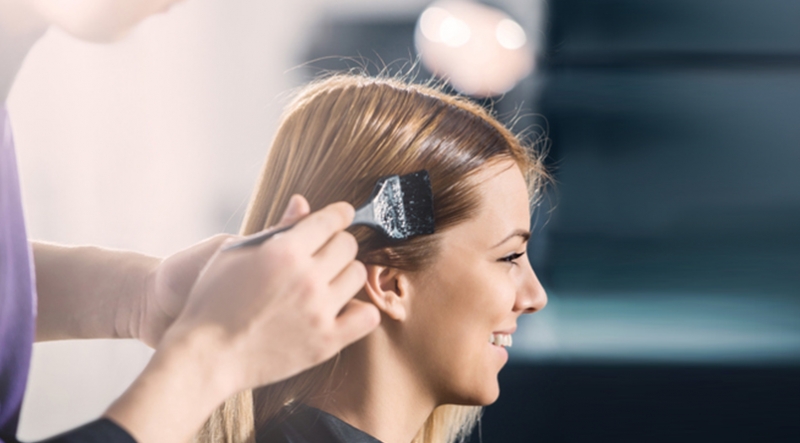
How can i know if my color treatment damages my hair?
If your color treatment is referred to as “permanent,” “tone by tone” or “ammonia-free,” it is based on a chemical oxidization process that opens up the hair cuticle to color it.
This alters the essence of the hair, but also makes it possible to modify the color deep-down and in a way that lasts.
If you prefer temporary color treatment, or better still, plant-based color treatment, your hair has less to worry about. By simply covering the surface of the hair, these types of color treatment, which do not involve oxidization, do not alter the essence of the hair. However, this shouldn’t stop you from taking care of your hair as if it were color-treated.
This alters the essence of the hair, but also makes it possible to modify the color deep-down and in a way that lasts.
If you prefer temporary color treatment, or better still, plant-based color treatment, your hair has less to worry about. By simply covering the surface of the hair, these types of color treatment, which do not involve oxidization, do not alter the essence of the hair. However, this shouldn’t stop you from taking care of your hair as if it were color-treated.
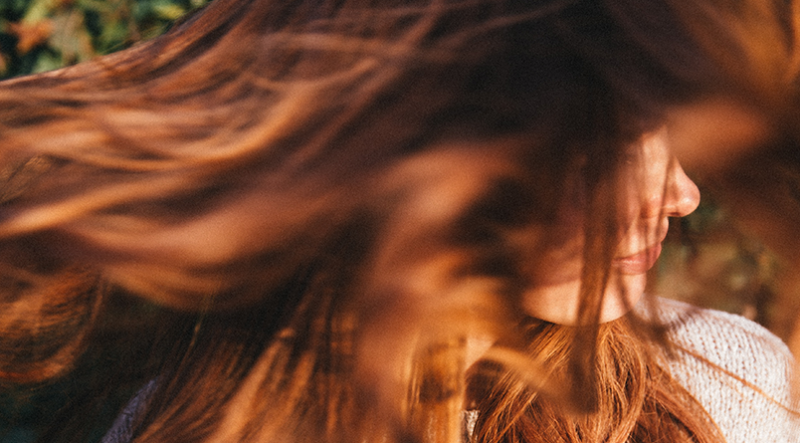
Why choose a permanent color treatment?
Despite being more aggressive in terms of its effect on hair, permanent color treatment is the most popular because it is the only color treatment that makes it possible to alter hair color significantly: dramatic darkening or lightening of natural color, 100% coverage of gray hair, color treatment that lasts up to several months.
However, it also comes with disadvantages: the color treatment is definitive, hair is slightly damaged and the “roots” effect appears as soon as the natural hair grows.
However, it also comes with disadvantages: the color treatment is definitive, hair is slightly damaged and the “roots” effect appears as soon as the natural hair grows.
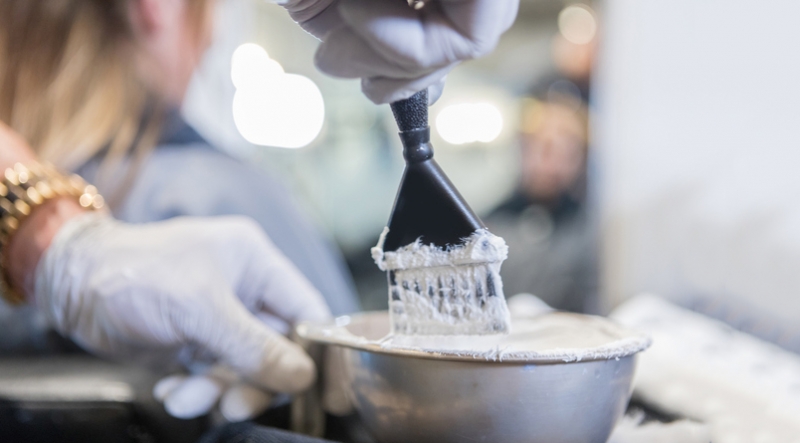
What is in my permanent color treatment?
Permanent color treatment is traditional oxidization color treatment – oxidization refers to the chemical process that makes it possible to alter the color at the core of the hair.
Ammonia – or alkaline agent – plays an important role: it opens up the hair’s scales so that the colorants can penetrate the hair.
Another molecule, oxygenated water – or hydrogen peroxide – is present and plays an oxidizing role: it dissolves the natural pigments in hair, making it possible for the coloring pigments to fix onto the hair.
The stronger the oxidization color treatment – as in permanent color treatments – the more able it is to alter hair color, but also to alter the essence of the hair itself, deep down and in a way that lasts.
Ammonia – or alkaline agent – plays an important role: it opens up the hair’s scales so that the colorants can penetrate the hair.
Another molecule, oxygenated water – or hydrogen peroxide – is present and plays an oxidizing role: it dissolves the natural pigments in hair, making it possible for the coloring pigments to fix onto the hair.
The stronger the oxidization color treatment – as in permanent color treatments – the more able it is to alter hair color, but also to alter the essence of the hair itself, deep down and in a way that lasts.

And if my color treatment is ammonia-free, is it less agressive?
Ammonia-free color treatment is still an oxidization color treatment that works by penetrating to the core of the hair to alter its pigmentation.
The absence of ammonia, however, does mean that the color treatment is more gentle, because the colorants penetrate the hair in a less aggressive way.
On the other hand, ammonia-free color treatments limit the color transformation that is possible: it is not possible to lighten hair, and it is not possible to entirely cover gray hair.
It is the perfect kind of color treatment to add intense tones to natural color or to blur the “roots” effect between two permanent color treatments.
The absence of ammonia, however, does mean that the color treatment is more gentle, because the colorants penetrate the hair in a less aggressive way.
On the other hand, ammonia-free color treatments limit the color transformation that is possible: it is not possible to lighten hair, and it is not possible to entirely cover gray hair.
It is the perfect kind of color treatment to add intense tones to natural color or to blur the “roots” effect between two permanent color treatments.
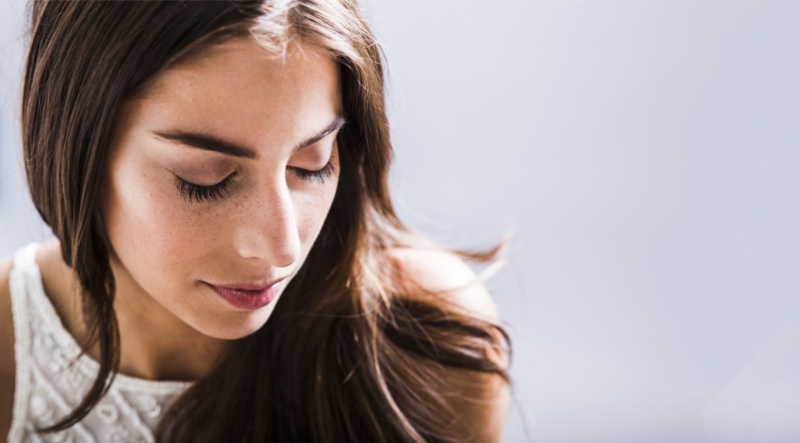
What does it mean if my color-treatment is tone-on-tone?
With very limited oxidization powers, tone-on-tone color treatment is less aggressive to hair than permanent color treatment, but it offers fewer possibilities to really change hair color: the targeted shade depends on the natural base, but color highlights can be created and it is possible to darken hair slightly and to hide the first gray hairs.
Its biggest advantage: it fades with washing and so the “roots” effect can be avoided.
Its biggest advantage: it fades with washing and so the “roots” effect can be avoided.
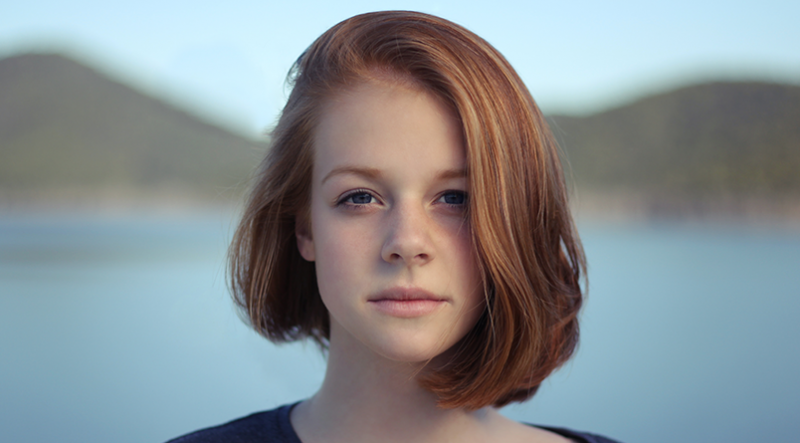
HOW CAN I CHOOSE A GENTLE COLOR TREATMENT FOR MY HAIR?
Oxidization-free color treatments are more gentle on hair because they do not alter the nature or pigmentation of hair. They simply cover the surface of the hair or disperse pigments without penetrating or damaging the hair fiber.
For safe hair color treatment, a temporary color is a good place to start: oxidizer- and ammonia-free, it is acts only on the surface of the hair and fades quickly without leaving an obvious color line.
It does not alter the natural color, but makes it possible to add temporary radiance to hair or to correct unwanted tones.
Totally gentle, plant-based color treatment contains only plant powders and no chemical products of any kind. It colors hair by coating the surface of the hair and allows the original color to show through.
Only limited color changes are possible with a plant-based color treatment, but it provides good coverage of gray hairs and the “roots” effect is minimal.
Its biggest advantage: it embellishes and strengthens hair, adding shine and vitality.
For safe hair color treatment, a temporary color is a good place to start: oxidizer- and ammonia-free, it is acts only on the surface of the hair and fades quickly without leaving an obvious color line.
It does not alter the natural color, but makes it possible to add temporary radiance to hair or to correct unwanted tones.
Totally gentle, plant-based color treatment contains only plant powders and no chemical products of any kind. It colors hair by coating the surface of the hair and allows the original color to show through.
Only limited color changes are possible with a plant-based color treatment, but it provides good coverage of gray hairs and the “roots” effect is minimal.
Its biggest advantage: it embellishes and strengthens hair, adding shine and vitality.

WHICH COLOR TREATMENT SHOULD I CHOOSE FOR MY GRAY HAIR?
More often than not, it is the appearance of gray hair that prompts people to start dying their hair.
Up to 20% gray hairs: when you start getting your first gray hairs, spread over the whole scalp, tone-by-tone or plant-based color treatment makes it possible to diffuse them.
Between 20% and 50% gray hairs: to hide them more effectively, permanent color treatment or plant-based color treatment with a longer leave-in time are the two possible solutions.
Between 50% and 100% gray hairs: permanent color treatment is the only color technique that makes it possible to cover a large number of gray hairs. But you can also choose to flaunt your natural hair color and go for the silver trend!
Up to 20% gray hairs: when you start getting your first gray hairs, spread over the whole scalp, tone-by-tone or plant-based color treatment makes it possible to diffuse them.
Between 20% and 50% gray hairs: to hide them more effectively, permanent color treatment or plant-based color treatment with a longer leave-in time are the two possible solutions.
Between 50% and 100% gray hairs: permanent color treatment is the only color technique that makes it possible to cover a large number of gray hairs. But you can also choose to flaunt your natural hair color and go for the silver trend!
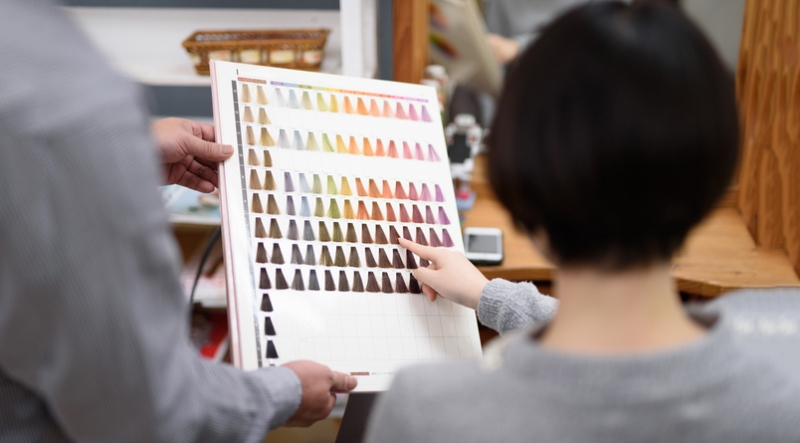
How can I get an overview of all the color treatment techniques?
Today, color treatment is available for all tastes and color requirements!
So you know what to expect, this table compares the effects of different color treatment techniques.
So you know what to expect, this table compares the effects of different color treatment techniques.
| Color change | Color retention | ColoGray hair coverage | Hair damage | |
| Oxidative permanent hair dye | Everything is possible: lighten or darken | Excellent | Up to 100% | High |
| Tone-on-tone dye | Similar to existing color. Adds definition. | Temporary. Fades with washing. | Not entirely | Moderate |
| Ammonia-free dye | Cannot lighten hair. Adds definition. | Moderate | Low | Low |
| Temporary dye | No color change. Adds definition. | Temporary | None | None |
| Natural dye | Cannot lighten hair. Adds definition, sometimes intense. | Good | Depends on processing time | None. On the contrary, reinforces hair fibers. |






